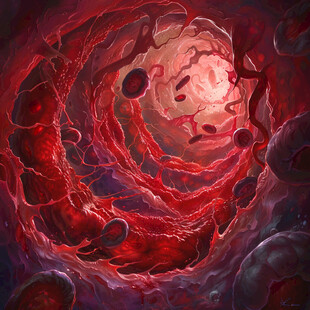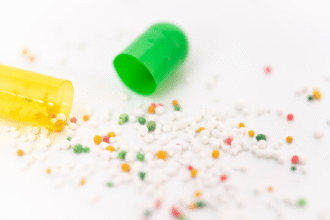Pathogenesis of Atherosclerosis
Atherosclerosis is a complex vascular condition characterized by the buildup of plaques in arterial walls. Its development involves hemodynamic changes, endothelial damage, lipid accumulation, and inflammatory responses, ultimately leading to plaque formation.
- Key Points
- Mechanisms of Atherosclerosis Development
- Hemodynamic Changes and Endothelial Damage
- Lipid Accumulation and Oxidation
- Inflammatory Responses and Foam Cell Formation
- Plaque Formation and Progression
- Adhesion Molecules and Inflammation
- Implications for Vascular Health
- Challenges and Future Directions
- Patient and Public Education
Key Points
- Atherosclerosis begins with endothelial damage caused by hemodynamic changes and oxidative stress.
- Lipid accumulation and oxidation play a central role in plaque formation.
- Inflammatory responses and cellular interactions contribute to the progression of lesions.
Mechanisms of Atherosclerosis Development
Hemodynamic Changes and Endothelial Damage
- Hemodynamic factors:
- Increased blood pressure and turbulence at arterial branches, bifurcations, and bends.
- Shear stress and mechanical forces cause anatomical damage to the intima.
- Endothelial injury:
- Retraction of endothelial cells exposes subendothelial tissue.
- Initial stimulus for compensatory thickening and reactive changes.
Lipid Accumulation and Oxidation
- Increased permeability:
- Endothelial damage increases permeability to plasma components and lipoproteins.
- Low-density lipoprotein (LDL) invades the intima, leading to lipid deposition.
- Oxidized LDL (oxLDL):
- Chronic hyperlipidemia promotes LDL oxidation, producing oxLDL.
- oxLDL damages endothelial cells, smooth muscle cells, and fibroblasts.
- Acts as a powerful inducer of inflammatory molecules, attracting monocytes.
Inflammatory Responses and Foam Cell Formation
- Monocyte migration:
- Monocytes adhere to endothelial cells and migrate to the subendothelium.
- Transform into macrophages and phagocytize oxLDL, forming foam cells.
- Macrophage activity:
- Synthesize and secrete growth factors, including PDGF, FGF, TGF-β, and IL-1.
- Stimulate smooth muscle cell proliferation, migration, and connective tissue formation.
Plaque Formation and Progression
- Fatty streaks:
- Formed by macrophage foam cells and smooth muscle cells in the intima.
- Fibrofatty lesions:
- PDGF and FGF promote the evolution of fatty streaks into fibrofatty lesions.
- Collagen, elastin, and glycoproteins form the plaque matrix.
- Fibrous plaques:
- Extracellular cholesterol crystals accumulate, forming the plaque nucleus.
- Collagen and smooth muscle cells create the fibrous cap.
Adhesion Molecules and Inflammation
- Increased expression:
- Endothelial damage upregulates adhesion molecules, including P-selectin, E-selectin, ICAM-1, and VCAM-1.
- Facilitates leukocyte adhesion and migration, amplifying inflammation.
Implications for Vascular Health
- Progression:
- Plaque growth narrows arterial lumen, reducing blood flow.
- Plaque rupture can lead to thrombosis and acute vascular events.
- Prevention:
- Addressing risk factors such as hyperlipidemia, hypertension, and smoking is critical.
Challenges and Future Directions
- Challenges:
- Understanding the interplay of genetic, environmental, and lifestyle factors.
- Developing therapies to target specific stages of atherosclerosis.
- Future directions:
- Advances in imaging techniques for early detection.
- Novel anti-inflammatory and lipid-lowering therapies.
Patient and Public Education
- Raise awareness of the importance of vascular health and early intervention.
- Promote healthy lifestyle choices, including a balanced diet and regular exercise.
- Encourage regular health check-ups to monitor risk factors.
Atherosclerosis remains a leading cause of cardiovascular disease. By understanding its pathogenesis, we can develop effective prevention and treatment strategies to improve vascular health and reduce disease burden.







